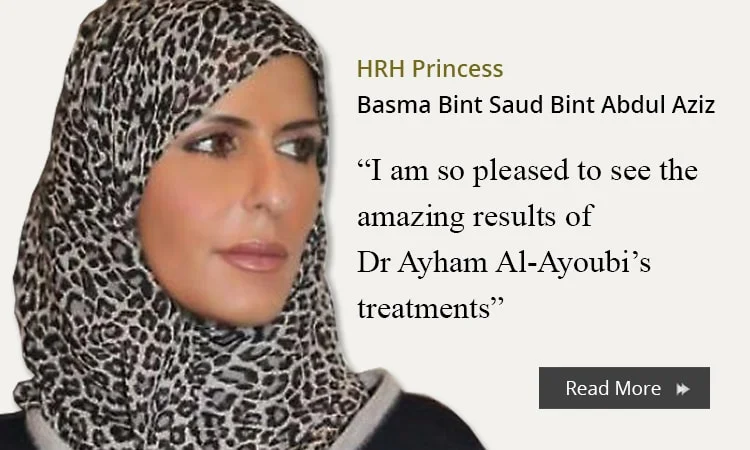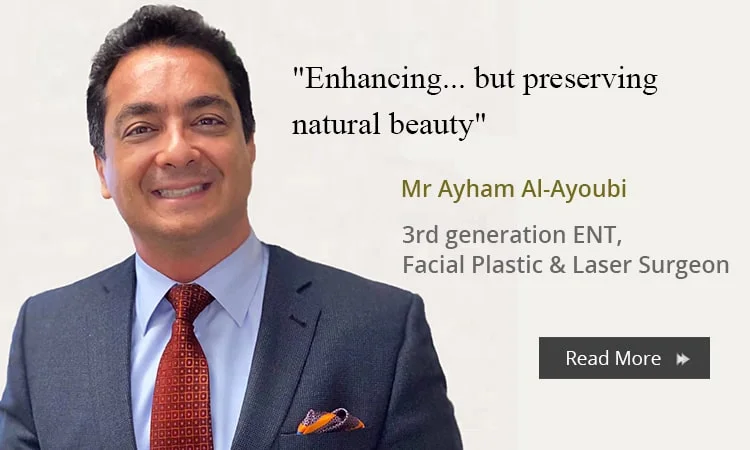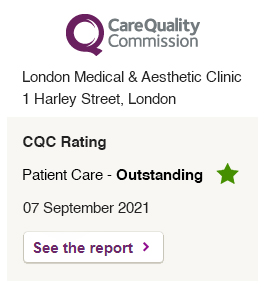Blepharoplasty is the medical term for an eyelid lift. It is a surgical operation of the eyelid designed to remove excess tissue such as loose skin, fat are removed or re-positioned surrounding muscles to create a more youthful, wide-eyed look.
Blepharoplasty – eyelid Surgery can remove puffiness or bags under the eyes. It can also correct droopy eyelids. The upper eyelid lift is performed in cases where the patient requires to lose the excess tissue above the eye that has developed over the years, or merely to lift the eyelid to give the eye a more attractive shape.
Lower eyelid (Blepharoplasty) is almost always done for cosmetic reasons,to improve puffy lower eyelid “bags” and reduce the wrinkling of skin.
As people age, the skin around the eyes loses its plasticity, and fat may accumulate under the skin. This makes the eye area look wrinkled; it can also cause puffiness and a general “tired” look. Eyelid surgery, or Blepharoplasty, can give a rejuvenated, rested appearance to the eyes.
The procedure involves removal of excess skin, muscle and fat around the eyes. It can be performed on the upper eyelid, the lower eyelid or both. Conditions that Blepharoplasty can treat include:
- Excess fat that causes puffiness in the upper eyelid
- Loose, sagging skin on eyelid
- Bags under the eyes
- Eyelid droopiness
- Excess skin and wrinkles on lower eyelid
Eyelid surgery is performed under general anesthesia. The plastic surgeon will try to make the incision line blend in with the natural structure of the eyelid. Droopiness can be corrected with a cut along the crease of the eyelid, followed by a tightening of muscles or removal of excess skin or fat.
For conditions of the lower eyelid, the plastic surgeon will make the incision just below the lower lash line. Immediately after the surgery, the eyes are lubricated and covered with bandages. Bruising usually disappears in about 10 days.
Results appear gradually, as swelling and bruising give way to a smooth, rejuvenated eye area. Patients can usually see results within several weeks, but it may take up to a year for the incision lines to fully blend in with the rest of the eyelid area.
As with any surgery, there are risks associated with eyelid surgery. Candidates for Blepharoplasty should discuss these risks with a qualified plastic surgeon and carefully weigh the benefits of the surgery against possible complications to decide whether the procedure is right for them. In addition to swelling and bruising, common side effects include:
Though changes in vision are usually temporary, eyelid surgery can cause permanent loss of vision. However, this is rare. Many of the side effects of eyelid surgery can be treated with medication, cold compresses and ointments. Most patients can resume normal activities within 10 days. Patients must wear darkly tinted sunglasses until healing is complete.
Eyelid surgery can really improve the appearance of the eye area, rejuvenating it and making it look smoother. “I am very happy with my eyelid surgery,” says one patient. “My eyes look more alive and open,” she continues. “I would do it again in a heartbeat,” says another happy patient. Yet another says, “my upper eyelids were hitting my lashes and were puffy and loose – my eyes are more open and tighter. They look like they did in my 20s.”
When considering eyelid surgery, it is important to keep in mind that the procedure will not stop the aging process. Candidates for the surgery must have realistic expectations. Even so, many eyelid surgery patients are happy with their results years later.
All these expectations can be discussed fully in the consultation with Dr Ayham Al-Ayoubi. Any questions can be answered pre procedure and full aftercare will be given after the procedure. All patients are invited back to the London Medical and Aesthetic Clinic so that we can monitor their progress with follow-up examinations and aftercare instruction.
Step by step Eyelid Surgery
Blepharoplasty is usually performed under local anaesthesia or light sedation, through external incisions made along the natural skin lines of the eyelids, such as the creases of the upper lids and below the lashes of the lower lids.
For the upper eyelids the incision is made in the natural crease line above the eyelashes. The incisions might extend into the crow’s feet or laughter lines at the outer corners of the eyes. Working through the incisions the surgeon will separate the skin from the subcutaneous layers and remove excess fat and trim sagging muscle and skin. The incisions will then be closed with very fine sutures.
For the lower eyelids the incision starts underneath the eyelashes and extends out 1 cm or so outwards into the crow’s feet area, the skin is then lifted upwards and outwards, gently tensioning the area and overlapping skin removed. Again the incisions will then be closed with very fine sutures.
Incisions may be made from the inside surface of the lower; this allows removal of lower eyelid fat without an externally-visible scar, but does not allow excess skin to be removed.
External skin resurfacing with a chemical peel or carbon dioxide laser may be performed simultaneously. This allows for a faster recovery process.
The operation typically takes one to three hours to complete. Initial swelling and bruising resolve in one to two weeks but at least several months are needed until the final result becomes stable.
Blepharoplasty’s effects are best appreciated by comparing before and after photos of surgical patients. The anatomy of the eyelids, skin quality, age, and the adjacent tissue all affect the cosmetic and functional outcomes. Factors which are known to cause complications include:
- Dry eyes – which may become exacerbated by disrupting the natural tear film
- Laxity (looseness) of the lower lid margin (edge) – which predisposes to lower lid malposition
- Prominence of the eye in relation to the malar (cheek) complex – which predisposes to lower lid malposition
Blepharoplasty surgery is an operation that usually takes 1 to 3 hours to complete using a local or general anaesthetic and normally performed as a day case.
Recovery after Blepharoplasty
The recovery process after a blepharoplasty may take up to a few weeks. Patients will receive instruction for during the home care and most of the time they receive painkillers that ease the pain caused by the incisions.
The first two days after the blepharoplasty operation has been performed, the patient receives an ointment treatment to keep the incisions lubricated.
Dr Ayham Al-Ayoubi recommend keeping iced eye pads on the eyes to reduce bruising and swelling. Eye drops may also be prescribed as they may help in pain management and in preventing infections.
Patients are recommended to keep their heads higher than the body while sleeping as this will accelerate the recovery process.
Different medications can help in moderating bruises and swelling resulted after surgery and also to accelerate the patient’s recovery. One of them is Wobenzym, an agent that helps in moderating swelling.
Dr Ayham Al-Ayoubi explains: “Wobenzym should be administrated the second or third days after surgery and three times a day. The patient’s condition will improve without this medication as well as it is only an additional treatment”.
Auriderm is another medication that has quite a similar effect as Wobenzym. Auriderm must be applied 10 days before the blepharoplasty and twice a day. There are however many products like these that could accelerate one’s recovery and they must be discussed with the Surgeon.
The third day after surgery, the patients are advised to keep lukewarm eye pads for comfort and wearing dark glasses for at least one week is also recommended to prevent irritation that may be caused by the wind and sun exposure.
The stitches are usually removed 5-7 days after the operation. The patient’s eyelids will be discoloured and swollen for about seven to ten days, and feel “tight” or “stiff” for a while.Patients should lubricate their eyes by exercising closing their eyes or looking at the ceiling.
During the first few weeks after a blepharoplasty, patients normally might experience excessive tearing, light sensitivity and sometimes double or even blurred vision.
The whites of the patient’s eyes can turn red or have red splotches. These symptoms usually disappear on themselves within two or three weeks after the operation.Wearing contact lenses is prohibited until the incisions are completely cured. Patients who need them will be advised by their Surgeon when it is safe to wear them again.
Patients who undergo a blepharoplasty may watch TV and are able to read after two or three days after surgery. Patients may go to work in a week or ten days after the operation. The scars may however still be visible, but one can use makeup to cover them.
Mr Ayham Al-Ayoubi explains that despite the length of the list that appears below, blepharoplasty is a relatively safe and effective operation when compared to many more widely invasive plastic and reconstructive surgical operation like tummy tuck, or face lifts. The vast majority of patients who undergo cosmetic eyelid surgery are pleased with their results.
- Pain: Though eyelid surgery is a minimally invasive procedure, there is some pain associated with the post-operative recovery phase. Following eyelid surgery, your eyelids will most likely feel sore and tight while the anesthesia is wearing off.Medication prescribed by Dr Ayham Al-Ayoubi may be used to lessen the intensity of the pain and alleviate discomfort. Some patients have described the post-operative pain associated with blepharoplasty as mostly uncomfortable, but not extreme, similar to that of a sunburn or windburn.
- Swelling: Following eyelid surgery, swelling is likely to occur around the incision areas. Cold compresses or iced eye pads can be used to minimize swelling. Be careful when applying compresses or pads so as not to rupture the incisions. Swelling can also be reduced by keeping the head elevated as much as possible. Any swelling that does occur may result in blurry vision for several days after the procedure. Avoiding excessive blinking as well as strenuous activities that increase blood flow to the eyes can help to reduce or even prevent extreme swelling. Simple ice compresses placed over the eyes can assist as well.
- Scarring: Dr Ayham Al-Ayoubi believes that the skill of the facial plastic surgeon will likely play a factor in determining the amount of scarring that occurs following the blepharoplasty procedure. Dr Ayham Al-Ayoubi says “More skilled surgeons are able to keep scarring to a minimum”. While some degree of scarring should be expected following eyelid surgery, most scars will fade over time and become inconspicuous to the casual observer. Dr Ayham Al-Ayoubi advises that by applying aloe vera or vitamin E after the sutures are removed can reduce scarring. Application of these creams must be done carefully to avoid damage to the wounds.
As a part of blepharoplasty recovery, the patient must avoid bending at the waist for about five days and strenuous activity (especially activities that raise one’s blood pressure, such as lifting and rigorous sports) for about ten days to two or three weeks.
Surgery will leave scars, but they are usually well hidden and normally fade in time.
Blepharoplasty may leave patients with bruises or swelling on their faces, and sometimes patients become depressed because of this. These are some of the side effects of surgery, which are completely normal and which disappear in few weeks, after a complete healing.
Dark glasses are often worn so one can proceed with one’s normal routine as soon as possible. Post-operative care instructions are given by the plastic surgeon and nursing staff and these must be carefully followed to ensure best results.
Extremely fine sutures are used, so usually post operative incision marks become virtually undetectable after a short period of time. Occasionally prolonged post operative pigmentation might occur.
After blepharoplasty surgery, the surgeon will probably lubricate the eyes with ointment and may apply a bandage.Some bruising and swelling will be experienced during the first and second weeks, however the majority of the swelling usually subsides after the first 10 days.
The eyelids may feel dry at first, but eye drops can help with this. Any sutures are usually removed after 5 days. Scars will form as a result of the surgery. Overall these scars heal relatively well, but will differ in each individual patient.
The face may look and feel tender and bruised. It may take up to two weeks for this swelling to settle. Patients should be able to return to work a week after the operation. For the first six weeks after the operation, they not lift anything heavy or do anything strenuous.
Most people resume normal activities within two to three weeks. The results of eyelid surgery last for a long time. The effects are sometimes permanent, but the effect may be reduced as we get older or if put on weight.
Recovery varies from patient to patient and it is advisable to take it easy for the first week after surgery. Most people are ready to go out and return to work after a week to 10 days. Patient should keep activities to a minimum for three to five days and he must avoid more strenuous activities for about three weeks.
Non-surgical Blepharoplasty
For those who are unable to have surgery or who simply do not wish to undergo a surgical procedure, there are non-surgical options. Injections of substances such as Restalyne and Anti-Wrinkle Injections. Restylane and other Dermal Fillers can rejuvenate the eyelid area, creating a more youthful appearance. It is non-invasive, takes approximately ten minutes, and most patients return to work and normal activity immediately. The results are not permanent but can last up to 18 months. Anti-Wrinkle Injections, it should be noted, is used to relax the muscles in the forehead and between the eyes, therefore not addressing most of the issues a patient seeking a blepharoplasty would want fixed.
In so called “non-surgical blepharoplasty” the use of lasers are used to tighten and decrease skin volume in the upper and lower eyelids. These techniques are effective yet have not replaced surgical treatments, and should not be confused with blepharoplasty, which treats not only the superficial skin tissue but also underlying connective and muscle tissues.
History of Blepharoplasty
The phrase “blepharoplasty” was invented by Karl Ferdinand von Grafein 1818 when the technique was used for repairing deformities that were caused by cancee rin the eyelids.
The roots of the present cosmetic advancements began around 3000 years ago with the ancient Egyptians. Documents “written on papyrus text detail how surgeons, even in that primitive age performed reconstructions on lips, noses, and ears using skin grafts cut from folds from the forehead or cheek. As techniques began developing the ancient Greeks and Romans began writing down and collecting everything they knew involving these procedures.
Aulus Cornelius Celsus, a first century Roman, described making an excision in the skin to relax the eyelids in his book De Medicine. Knowledge of blood circulation and tissue health were discovered and spread throughout the ancient world allowing techniques to improve. However, during the Middle Ages, plastic surgery was prohibited because it was viewed as something that was spiritually unethical. This ban was also due to poor hygiene. During the Renaissance, intellectuals rediscovered texts from ancient Greece and Rome illustrating surgical procedures and techniques.
As the 19th century approached developments were being made that would eventually be the foundation to modern cosmetic surgery. The First World War was the first major event that really relied on the dedication of surgeons and advancements in cosmetic surgery. This gave doctors a chance to practice and perfect reconstructive surgical procedures. It also prepared medical personnel for the tragedies of World War II and other subsequent catastrophes. As with any medical advancements, the development of surgical techniques goes through a period of trial and error as reconstructive surgery did during World War I. Each improvement eventually becomes the root of future advancements.
Asien Blepharoplasty or also know as double eyelid surgery is for Oriental patients with different variations of eyelid shape seeking Asian blepharoplasty e.g. without an eyelid crease, with a poorly defined eyelid crease, with an eyelid crease but with hooding, etc. Most Oriental patients requesting blepharoplasty surgery seek better definition of an eyelid crease or to create a new eyelid crease. This can often lead to differences in how the patient is perceived and how the patient feels in him/herself. Just the presence of an eyelid can give the impression that the patient is more awake, more alert, more expressive with a softer, more attractive eye appearance. Many Oriental women comment on how they can wear make-up properly after Asian/ Oriental blepharoplasty surgery/ double eyelid surgery due to better definition of their eyelid and exposure of the eyelashes that were previously hidden by eyelid skin.
Dr Ayham Al-Ayoubi explains that it is very important to recognise that the Oriental eyelid is very different to the Western occidental eyelid with very different anatomy. Similarly, it is also crucial that the surgeon recognise that there are many different variations of normal Oriental eyelids, both in those with eyelid creases and those without, depending on the patient’s family origin.
Most Oriental patients do NOT wish to look like their Western/Occidental colleagues. Indeed, a standard blepharoplasty designed for an Occidental/Western eyelid would look very strange in an Oriental patient and inharmonious with the rest of the patient’s face. Instead, most Oriental patients seek better eyelid crease definition i.e. to create an Oriental looking double eyelid. The surgery to create an Oriental looking eyelid crease is therefore very different to a conventional Occidental/Western blepharoplasty. Counselling a patient for an Asian/Oriental blepharoplasty (double eyelid surgery) during the preoperative visit is probably just as important as the surgery itself, since it is during the preoperative visit that the important decisions about the design of the eyelid crease are made such as where to set the height and shape of the new eyelid crease.
Dr Ayham Al-Ayoubi about Blepharoplasty
Blepharoplasty (eyelid) surgery is fast becoming one of the most popular types of cosmetic surgery performed in the UK.
Blepharoplasty or a cosmetic eyelid surgery procedure can successfully counter the effects of drooping eyes.
Blepharoplasty is sometimes needed for functional reasons. When an advanced amount of upper eyelid skin is present, the skin may protrude over the eyelashes and causes a loss of peripheral vision (side vision).
The outer and upper parts of the visual field are most commonly affected and the condition may cause difficulty with activities such as driving or reading. In this circumstance, upper eyelid blepharoplasty is performed to improve peripheral vision.
Mr Ayham Al-Ayoubi , ENT, Facial Plastic and Laser Surgeon explains: “All types of wrinkles around the eyes will be lessened by eyelid surgery, but not totally eradicated – a chemical peel may help further with wrinkles. In summary, blepharoplasty is primarily a treatment to remove excess skin and fatty tissue.”
Mr Ayham Al-Ayoubi explains the different surgical methods that could be used:
- Closed thread/suture technique (where simple stitches are used to create a crease in the eyelid by creating a depression in the skin via attaching the skin to some of the deeper structures within the eyelid) or
- Open incision technique (where the skin is cut and new skin crease is made by directly attaching the cut edges of skin to the deeper structures).
The operation is usually done as a day case procedure under local anaesthetic injections and is very well tolerated. Each operation usually takes about an hour to do both upper lids. Recovery time is usually very quick with minimal bruising/swelling that rapidly reduces over a few weeks.















































